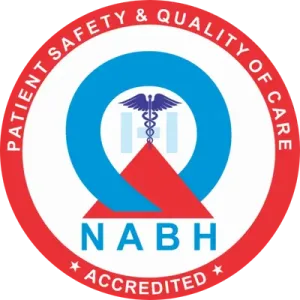Understanding Heart Attacks: Symptoms, Causes, and Treatment
Understanding Heart Attacks:

Recognizing Symptoms: Identifying the symptoms of a heart attack is paramount for prompt intervention and minimizing potential damage. While symptoms may vary among individuals, common warning signs include:
Chest Discomfort: This often manifests as pressure, squeezing, fullness, or pain in the center of the chest, with potential radiation to the arms, back, neck, jaw, or stomach.
Shortness of Breath: Individuals may experience difficulty breathing or a sensation of being unable to catch their breath, often accompanied by chest discomfort.
Gastrointestinal Symptoms: Some individuals may report nausea, indigestion, or vomiting, resembling stomach discomfort.
Cold Sweats: Profuse sweating, often accompanied by a sense of impending doom, can occur.
Fatigue: Unexplained fatigue, weakness, or lightheadedness, particularly prevalent in women, may signal a heart attack.
It’s essential to note that not all heart attacks present with sudden, intense symptoms. Silent heart attacks, characterized by subtle or no symptoms, are also prevalent, particularly in individuals with diabetes or older adults. Therefore, any unusual discomfort or symptoms should not be dismissed, and immediate medical attention should be sought.
Exploring Causes:
Atherosclerosis: The gradual buildup of plaque, consisting of cholesterol, fat, and other substances, within the coronary arteries narrows the vessels, impeding blood flow to the heart.
Hypertension: High blood pressure imposes additional strain on the heart and arteries, heightening the risk of a heart attack.
Hypercholesterolemia: Elevated levels of LDL cholesterol (“bad” cholesterol) foster plaque accumulation within the arteries.
Smoking: Tobacco smoke damages blood vessels, accelerates plaque formation, and diminishes oxygen delivery to the heart.
Diabetes: Individuals with diabetes face an elevated risk of heart disease due to elevated blood sugar levels and associated metabolic abnormalities.
Obesity and Sedentary Lifestyle: Excess weight and physical inactivity contribute to various cardiovascular risk factors, including hypertension, diabetes, and hypercholesterolemia.
Genetic Predisposition: A family history of heart disease amplifies the likelihood of developing cardiovascular complications.
Treatment Options:
Medications: Thrombolytic agents or clot-dissolving medications may be administered to restore blood flow by dissolving blood clots. Additionally, medications such as aspirin, beta-blockers, ACE inhibitors, or statins may be prescribed to manage symptoms and reduce the risk of recurrent cardiac events.
Coronary Angioplasty and Stenting: The procedure known as coronary angioplasty and stenting is a sophisticated yet minimally invasive approach aimed at addressing coronary artery blockages. This process begins with the insertion of a thin, flexible catheter into the affected artery, guided by advanced imaging techniques. Upon reaching the blockage site, a small balloon attached to the catheter is inflated, exerting pressure against the plaque buildup and effectively widening the narrowed artery. This action restores blood flow to the heart muscle, alleviating symptoms and reducing the risk of further complications.
Following the balloon angioplasty, a stent, mesh-like metal tube is carefully positioned within the newly widened artery. The stent serves to maintain the patency of the artery, preventing its re-narrowing and ensuring unobstructed blood flow to the heart. Some stents may be coated with medication (known as drug-eluting stents) to discourage the recurrence of plaque formation and promote long-term arterial health. Compared to traditional surgical approaches, coronary angioplasty and stenting offer numerous benefits, including shorter recovery times, reduced risk of complications, and improved patient comfort.
Coronary Artery Bypass Surgery: Coronary artery bypass surgery, also referred to as bypass grafting, is a surgical intervention employed to address extensive arterial blockages hindering adequate blood supply to the heart. This procedure aims to establish alternative blood pathways that bypass the obstructed arteries and restore optimal blood flow to the heart muscle. During the surgery, a healthy blood vessel typically harvested from the patient’s leg, arm, or chest wall is utilized as a graft.
Subsequently, the surgeon meticulously attaches the graft to the coronary artery, creating a bypass route that enables blood to circumvent the blocked segment of the artery. By establishing these new conduits, bypass surgery ensures the unimpeded delivery of oxygen-rich blood to the heart muscle, thereby reducing the risk of myocardial damage and alleviating symptoms such as chest pain (angina). While coronary artery bypass surgery is more invasive than angioplasty, it remains a crucial treatment option for individuals with severe arterial blockages or those unsuitable for less invasive interventions.
Lifestyle Modifications: Adopting a heart-healthy lifestyle is paramount for preventing recurrent heart attacks and managing underlying risk factors. Lifestyle modifications encompass smoking cessation, weight management, adherence to a balanced diet low in saturated fats and cholesterol, regular physical activity, stress management, and diligent control of blood pressure and cholesterol levels.
Conclusion:
Heart attacks represent a significant medical emergency necessitating immediate attention. By familiarizing yourself with the symptoms, causes, and treatment options associated with heart attacks, you can proactively safeguard your heart health and reduce the likelihood of experiencing a cardiac event. Prevention remains the cornerstone of cardiovascular health, underscoring the importance of embracing a heart-healthy lifestyle. At Mukat Hospital, we are dedicated to providing comprehensive cardiac care, empowering individuals to lead fulfilling lives marked by optimal heart health. Stay informed, stay vigilant, and prioritize your heart health today for a brighter and healthier tomorrow.












